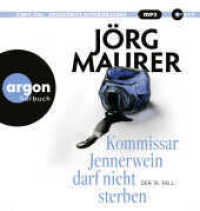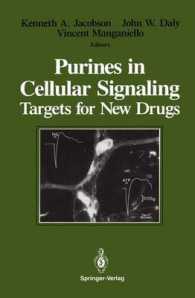- ホーム
- > 洋書
- > 英文書
- > Nature / Ecology
Full Description
The Formosan subterranean termite, Coptotermes formosanus, is the most destructive and invasive termite species globally. It is also the only termite species listed in the world's 100 worst invasive alien species of the Global Invasive Species Database. Annually, its infestation costs more than $4 billion in control and damage repairs in the USA alone. This book is the first comprehensive resource drawing on all the literature on C. formosanus since Tokuichi Shiraki first described the species in 1909. The book covers the worldwide distribution of this species, its biogeography, and how it has dispersed from its native range in southern China and Taiwan to different parts of the world. It describes its present taxonomic status and discusses the species' biology, ecology, foraging behavior, physiology, chemical ecology and its association with symbionts. From a practical standpoint, the authors address all of the various management options for this species, such as baits, soil termiticides, wood preservatives, inspection and detection technologies, and Integrated Pest Management (IPM) approaches. Lastly, there are chapters dedicated to another important destructive species, Coptotermes gestroi (the Asian subterranean termite), and the recently discovered C. formosanus/C. gestroi hybrids. This important book is an essential and valuable reference for researchers, graduate students, pest management professionals, chemical manufacturer personnel, building and property managers, and others. It provides readers with a comprehensive understanding of the biology and management of the Formosan subterranean termite and the Asian subterranean termite.
Contents
Chapter 1: Introduction. By Nan-Yao Su and Chow-Yang Lee. Chapter 2: Biogeography of Coptotermes formosanus. By Rudolf H. Scheffrahn. Chapter 3: Taxonomic status of Coptotermes formosanus and related species. By Hou-Feng Li and Chia-Chien Wu. Chapter 4: A primer to termite biology: Coptotermes colony life cycle, development, and demographics. By Thomas Chouvenc. Chapter 5: Ecology and foraging behavior. By Nan-Yao Su. Chapter 6: Physiology of the Formosan subterranean termite, with special reference to wood degradation and metabolism. By Gaku Tokuda, Shuji Itakura, Nathan Lo. Chapter 7: Chemical Ecology. By Qian Sun. Chapter 8: Symbiosis and microbiome: a unique quadripartite system. By Claudia Husseneder. Chapter 9: Dispersal and genetic structure of colonies and populations. By Edward L. Vargo. Chapter 10: Inspection and monitoring. By Faith M. Oi. Chapter 11: Management using baits. By Nan-Yao Su. Chapter 12: Management of subterranean termites with liquid insecticides. By Chow-Yang Lee and Kok-Boon Neoh. Chapter 13: Prevention of damage to building materials using wood preservatives. By Wakako Ohmura and Koichi Yamamoto. Chapter 14: Alternative and experimental management methods. By J. Kenneth Grace. Chapter 15: IPM and area-wide population management. By Nan-Yao Su. Chapter 16: Asian Subterranean Termite, Coptermes gestroi. By Kok-Boon Neoh and Chow-Yang Lee. Chapter 17: Hybridization between Coptotermes formosanus and Coptotermes gestroi. By Thomas Chouvenc and Hou-Feng Li. Chapter. 18: Using Coptotermes for laboratory experiments: field collection, laboratory rearing and bioassay visualization. By Thomas Chouvenc. Chapter 19: More questions to answer






